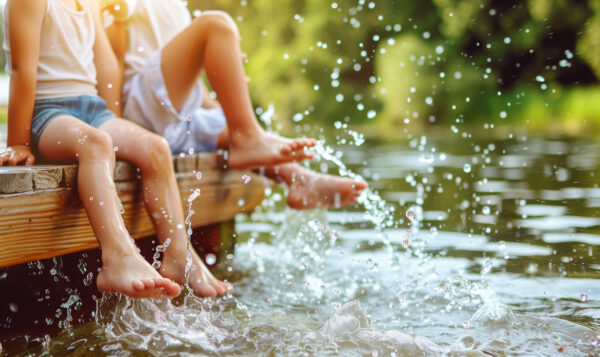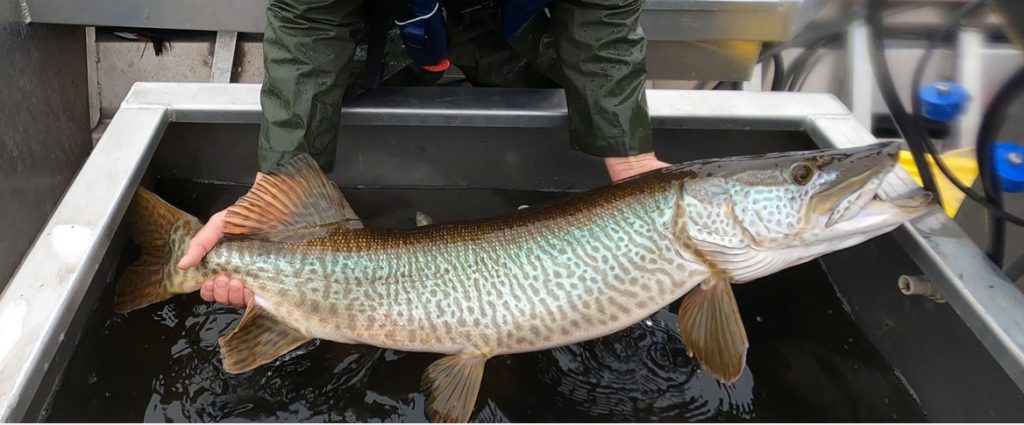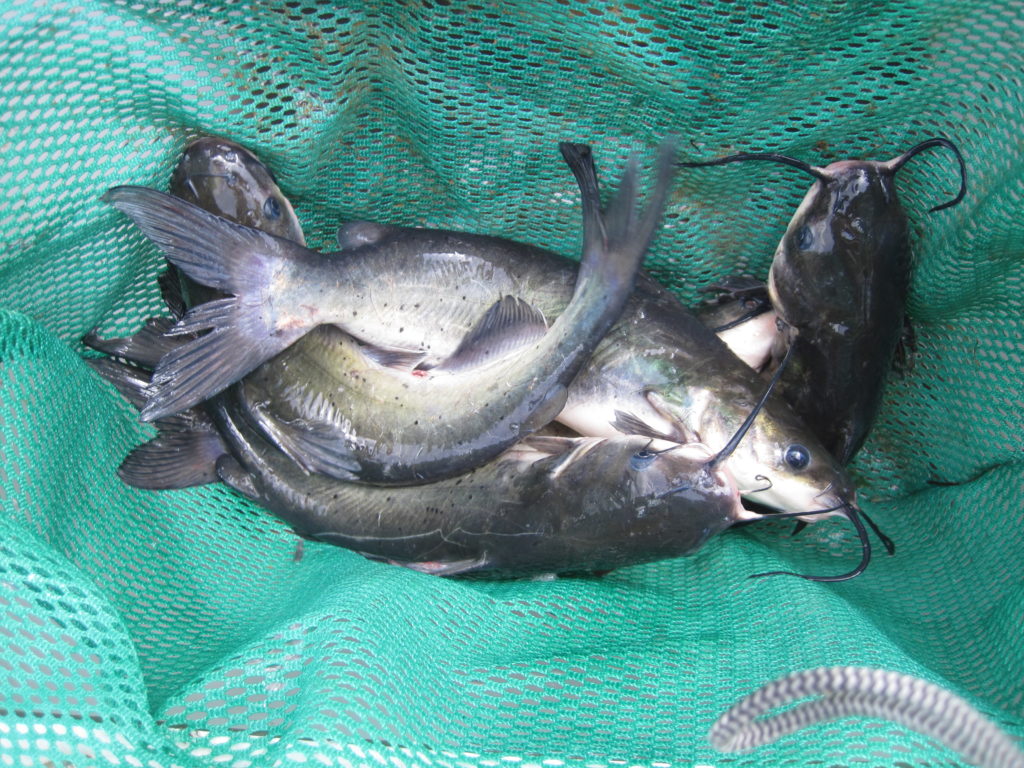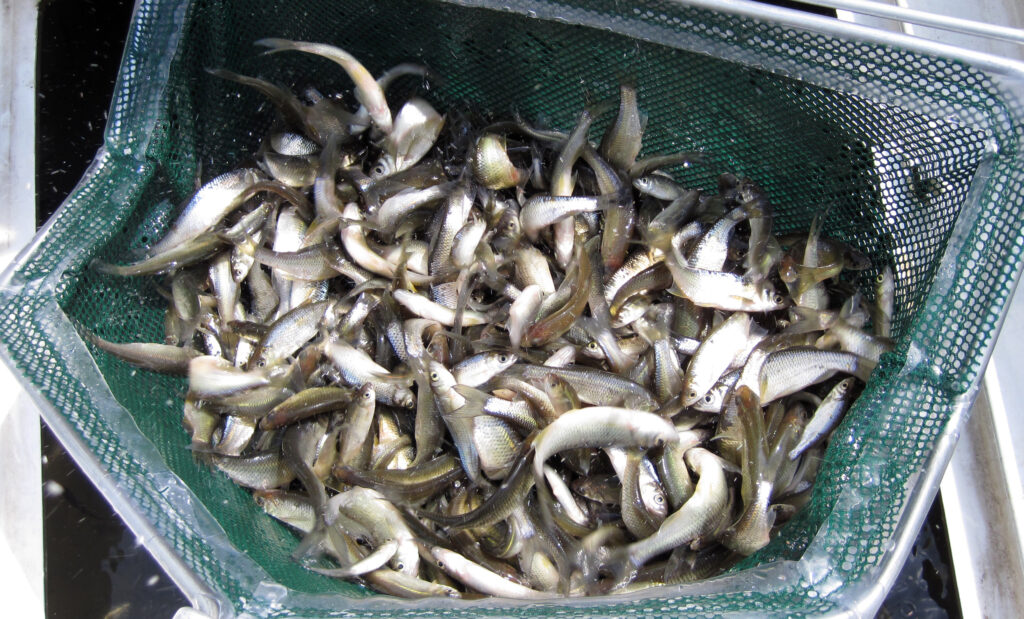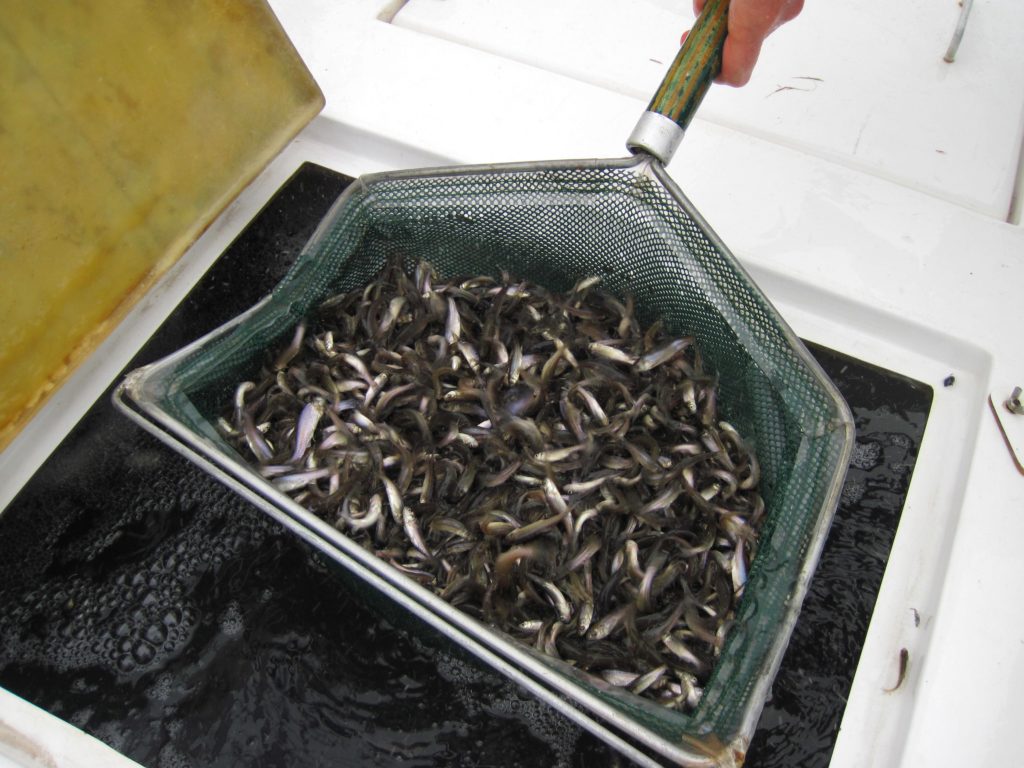
Choosing The Right Stocking Fish For Your Pond
What truly brings a lake or pond to life isn’t just the beautiful blue water on its surface—it’s the thriving ecosystem beneath, filled with stocker fish. Fish stocking is the deliberate introduction of forage or predator fish to a pond or lake, which can have a variety of benefits. Whether it’s to enhance an aquatic ecosystem or introduce recreational fishing opportunities, pond stocking can help set your fishery up for success.
Fish stocking requires a strategic approach. With a comprehensive Fisheries Management Plan, you can transform your pond from a mere body of water into a thriving fishing haven. What type of stocker fish should you integrate into your pond? It depends on your goals and budget. Explore our stocking best practices and what to consider when stocking your fishery.

Why Proper Fish Stocking Matters
Properly stocking pond fish is crucial for maintaining a fishery’s vitality, which can offer numerous benefits for property owners or managers. For one, it supports a balanced ecosystem where predatory and prey species are in harmony, reducing the chances of certain species overpopulating and causing ecological disruptions. A healthy fishery thrives with a balanced ratio of predator fish to prey fish. Stocking pond fish can significantly enhance the recreational value of a pond. It enables the development of a trophy fishery, where anglers can experience the thrill of catching large, prize-worthy fish. Establishing a fishery with high catch rates can also be a valuable asset in communities, creating a space where everyone can come together to enjoy a day of fishing. Beyond recreation, certain species of stocker fish can help control mosquito larvae, ultimately contributing to a decrease in the populations of these nuisance pests. Grass carp can act as natural weed control, feeding on common aquatic weeds and effectively reducing unwanted vegetation in ponds and lakes.

Common Types of Stocker Fish
Stocking your pond or lake with fish can be an exciting endeavor; however, selecting the right types of stocker fish is crucial to ensure a balanced and thriving ecosystem. Before diving into the different options available, it’s important to remember that regulations on fish stocking vary by location. Always check that the fish species you’re considering are legal in your state to prevent ecological imbalances and adhere to local wildlife laws. In addition, the time of year and water temperature will determine what fish you can stock.
With that in mind, let’s explore some of the most common types of stocker fish:
Predator Fish:
Largemouth Bass
Largemouth bass are a sought-after freshwater fish known for their striking appearance, with a large mouth extending beyond their eyes and a dark green to olive coloration. Popular in trophy fisheries, Largemouth bass spawn from April to late May when water temperatures reach 63º to 68ºF. Depending on your goals, bass stocking can take place in the spring or winter. Largemouth have a tendency to become overpopulated and often require the active harvest of intermediate-size fish to prevent size classes from becoming stunted.
Hybrid Striped Bass
The hybrid striped bass is not a naturally occurring species and is often referred to as palmetto, wiper, Whiterock, sunshine, and Cherokee bass. They can grow 15” to 20” in length and rarely reproduce in nature; however, they are popular fish to stock for those anglers looking to add some excitement to their trophy fishery. The best time for hybrid striped bass stocking is in the winter months, as many other game species are inactive during this time.
Tiger Muskie
Tiger muskies are the sterile offspring of true muskies. They have irregular dark-colored markings and can grow quite large, with some tiger muskies reaching 30 pounds. A good time for pond-stocking small tiger muskies is in the fall, allowing for bigger catches in the spring. They can live up to 26 years and can be a cost-effective choice for pond owners.
Bluegill
Bluegills are both predators and forage fish, widely recognized by their deep blue and purple hue. They start to spawn when the water temperature reaches 60°F, primarily from April to September. Bluegills can live for five to six years and grow six to 10 inches in length. As a primary food source for largemouth bass, they are often stocked in lakes and ponds to maintain a balanced fishery. They are also great to stock in fisheries that are looking for high catch rates. The most common time for fish stocking this species is during the fall months.
Specklebelly Sunfish
Specklebelly Sunfish are ideal for small fishing ponds due to their skewed sex ratio, with 95 to 100 percent males. This is especially beneficial for pond owners because it naturally controls population growth, reducing the risk of overpopulation. They aggressively eat fish food, grow to large sizes, and are easy to catch. Since this hybrid does not reproduce, the population will need to be maintained through continual pond stocking.
Catfish
Catfish are recognized by their slender, whisker-like barbels, which resemble cat whiskers. Their capacity to grow quite large makes them a favorite among anglers. Spawning begins in May when water temperatures are between 75 and 85ºF and continue for several months. They can live up to 24 years in Northern climates and grow to be between 15-24 inches in length.
Black Crappie
The Black Crappie is a popular freshwater game fish recognized by its dark, speckled pattern, round body shape, and large dorsal fin. Their spawning season is from April to May when the water temperatures are higher than 68ºF. Since they are a predator species, black crappies can easily become overpopulated in smaller ponds, so it’s important to implement fish harvesting to maintain a balanced ratio. They can live up to eight years and grow to be 12 to 18 inches in length.
Forage Fish:
Redear Sunfish
Redear sunfish, often called shell crackers due to their diet of snails and other mollusks, are freshwater fish known for the distinctive red or orange edge on their gill covers. Spawning occurs during the months of May, June, and July when water temperatures reach 70⁰F. They are usually stocked in small ponds and lakes with bluegill and largemouth bass and can live for six years. This fish species can grow to be between eight and 11 inches in length.
Golden Shiners
The Golden Shiner is a small to medium-sized freshwater fish notable for its elongated body and striking golden or olive-green shimmer. The best time to stock this pond fish coincides with their spawning season in late spring to early summer when water temperatures reach between 68 to 78°F. They reach maturity at age two and can grow up to nine inches long.
Threadfin Shad
Threadfin shad is known for its early maturation rates and is a prominent food source for largemouth bass and catfish. Spawning typically occurs when water temperatures reach 70°F, and the eggs adhere to objects in the water. They are best stocked just prior to spawning so their offspring can contribute to the food chain during the summer and fall. They can live up to three years and can grow anywhere between five and seven inches in length.
Fathead Minnows
The Fathead Minnow is a small freshwater. This fish is notable for its stout body and dull olive-grey coloring, often featuring a stripe along its side and a darkened head in breeding males. They are prolific breeders and can rapidly establish populations that can support predator fish species. The ideal fish stocking time for this species is just before spawning, which occurs from May to August.
Stock Your Pond with SOLitude
Choosing to stock pond fish is a great way to enhance your lake or pond’s health and turn it into a fun recreational source for family and friends. At SOLitude Lake Management, we serve as your comprehensive partner in lake and pond management, specializing in strategic fish stocking services that enhance your overall fisheries management efforts. Our team has extensive experience in raising and stocking a wide variety of fish species for ponds.
Working with a professional Fisheries Biologist provides your fishery with meticulous care throughout the year. Starting with electrofishing to get a baseline understanding of the fish population in a pond, including their species, sizes, and health conditions – your aquatic specialist can gather data and drive a more effective fisheries management plan. Through supplemental feeding, water quality assessments, habitat management, and other customized solutions, the experts at SOLitude strive to meet the unique needs of your property, budget, and long-term objectives, ensuring a vibrant and sustainable aquatic ecosystem.
Build Your Dream Fishery
SOLitude Lake Management is a nationwide environmental firm committed to providing sustainable solutions that improve water quality, enhance beauty and preserve natural resources.
SOLitude’s team of aquatic scientists specializes in the development and execution of customized lake, stormwater pond, wetland and fisheries management programs. Services include water quality testing and restoration, algae and aquatic weed control, installation and maintenance of fountains and aeration systems, shoreline erosion control, muck and sediment removal and invasive species management. SOLitude partners with homeowners associations, golf courses, private landowners, businesses and municipalities. SOLitude Lake Management is part of Rentokil, a leading business services company, operating across the United States, Canada and Puerto Rico.
For more information, visit SOLitude Lake Management at solitudelakemanagement.com, and connect on Facebook, LinkedIn, Twitter, Instagram and YouTube.

